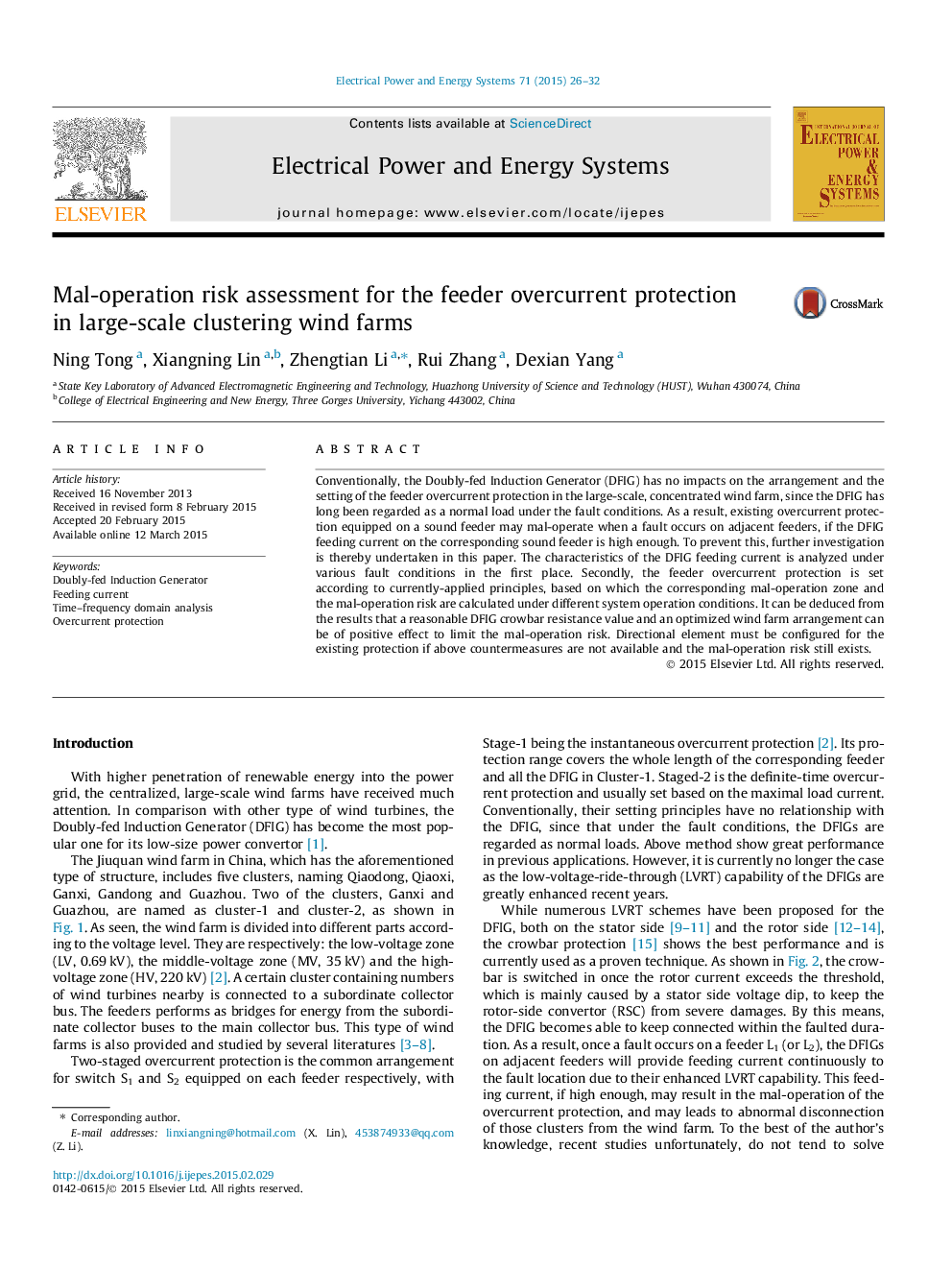| Article ID | Journal | Published Year | Pages | File Type |
|---|---|---|---|---|
| 399414 | International Journal of Electrical Power & Energy Systems | 2015 | 7 Pages |
•The feeder overcurrent protection mal-operation caused by the DFIG feeding current is introduced.•The superposition of the meaningful components are defined as the feeding current.•The less meaningful components are proved to be of limited impact for the accuracy of the calculated feeding current.•The feeding current and the protection setting value are transferred to relative values for comparison studies.•The mal-operation zone and mal-operation risk are assessed under different conditions.
Conventionally, the Doubly-fed Induction Generator (DFIG) has no impacts on the arrangement and the setting of the feeder overcurrent protection in the large-scale, concentrated wind farm, since the DFIG has long been regarded as a normal load under the fault conditions. As a result, existing overcurrent protection equipped on a sound feeder may mal-operate when a fault occurs on adjacent feeders, if the DFIG feeding current on the corresponding sound feeder is high enough. To prevent this, further investigation is thereby undertaken in this paper. The characteristics of the DFIG feeding current is analyzed under various fault conditions in the first place. Secondly, the feeder overcurrent protection is set according to currently-applied principles, based on which the corresponding mal-operation zone and the mal-operation risk are calculated under different system operation conditions. It can be deduced from the results that a reasonable DFIG crowbar resistance value and an optimized wind farm arrangement can be of positive effect to limit the mal-operation risk. Directional element must be configured for the existing protection if above countermeasures are not available and the mal-operation risk still exists.
